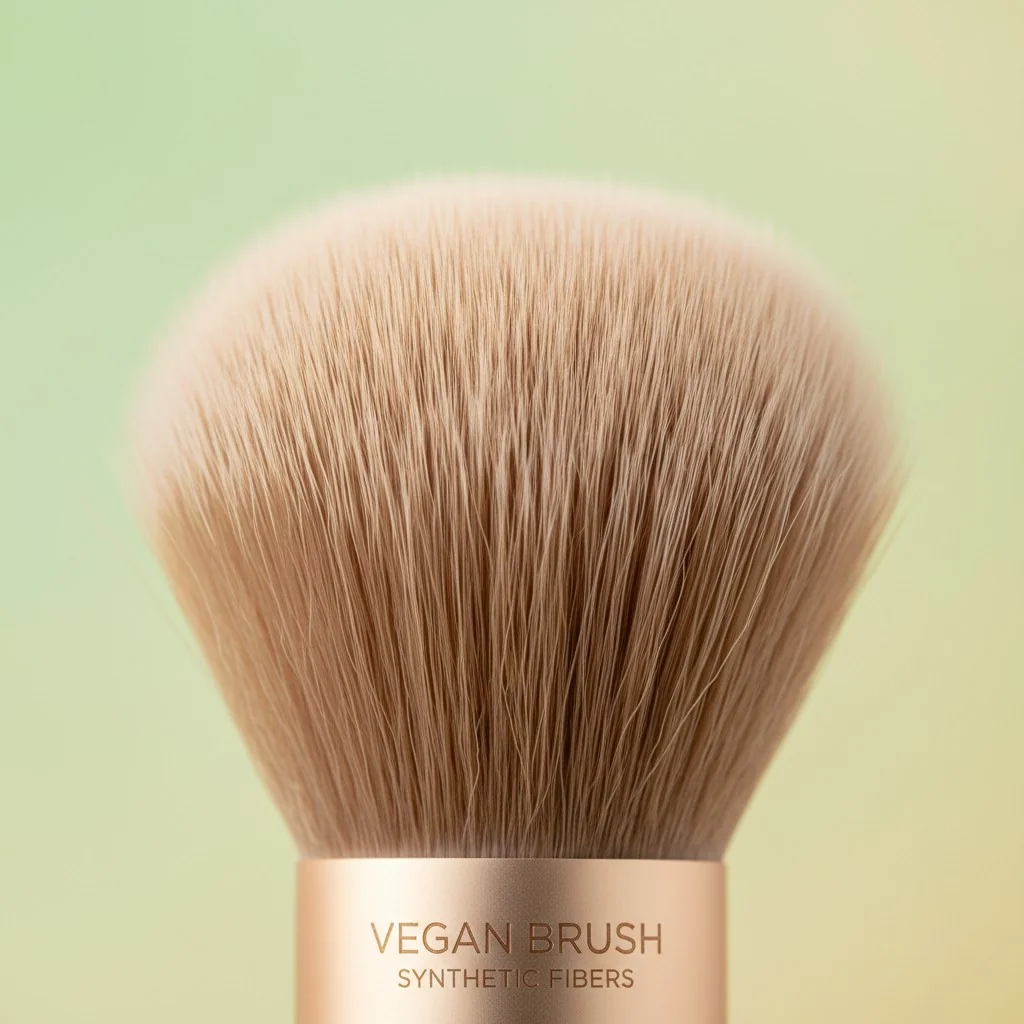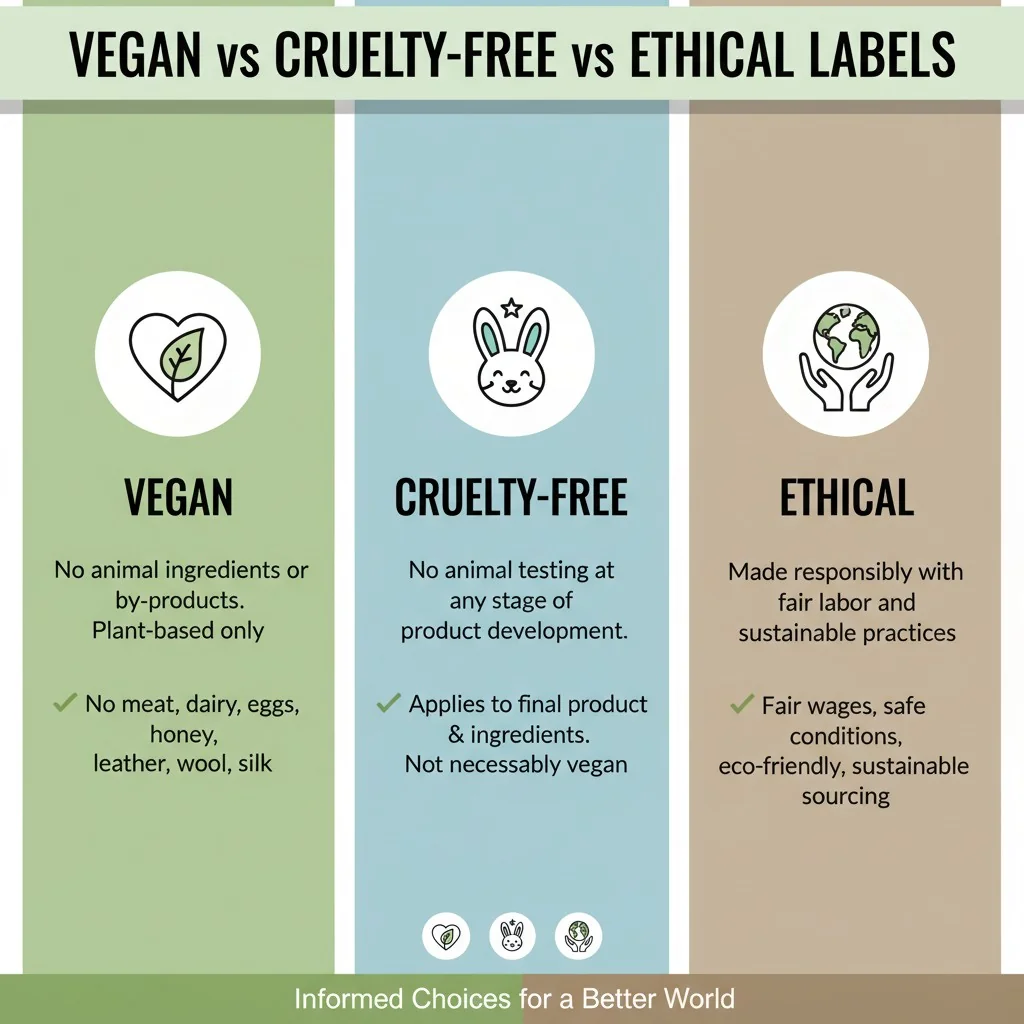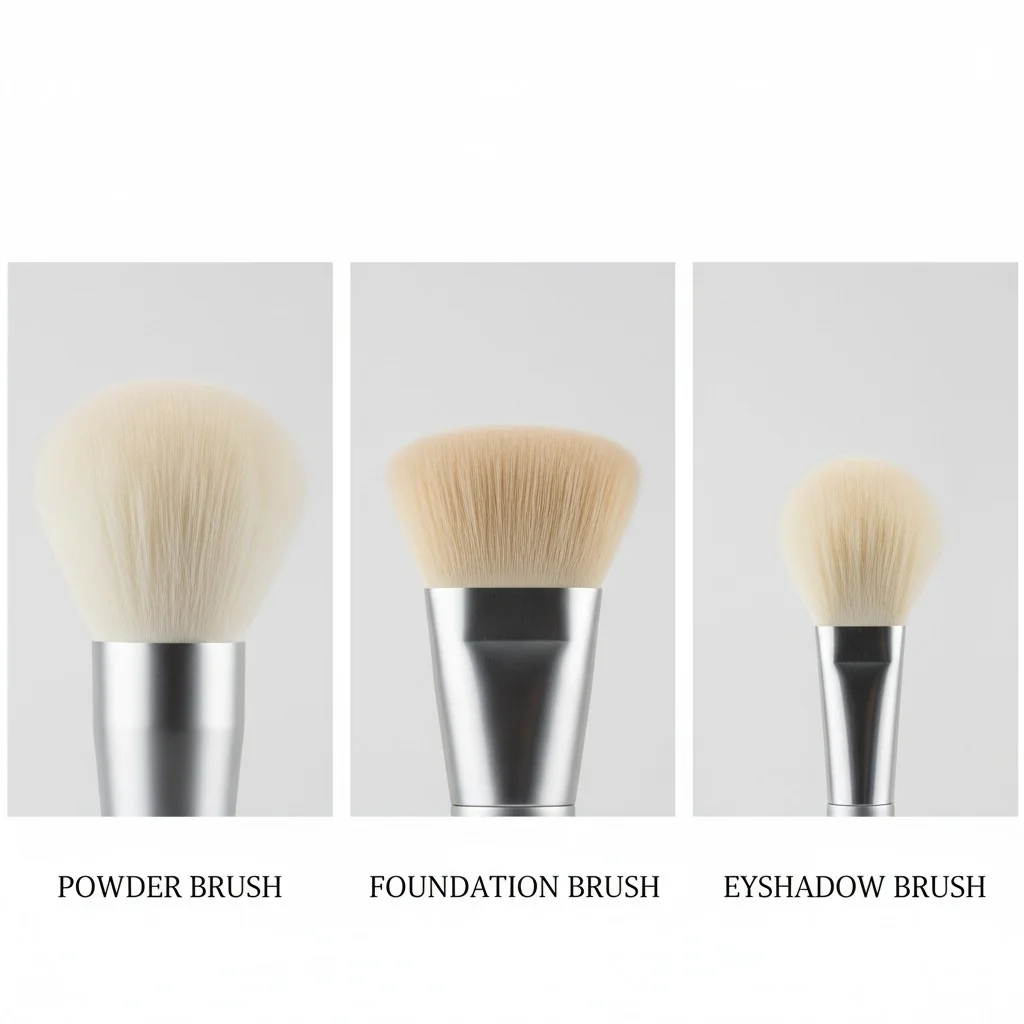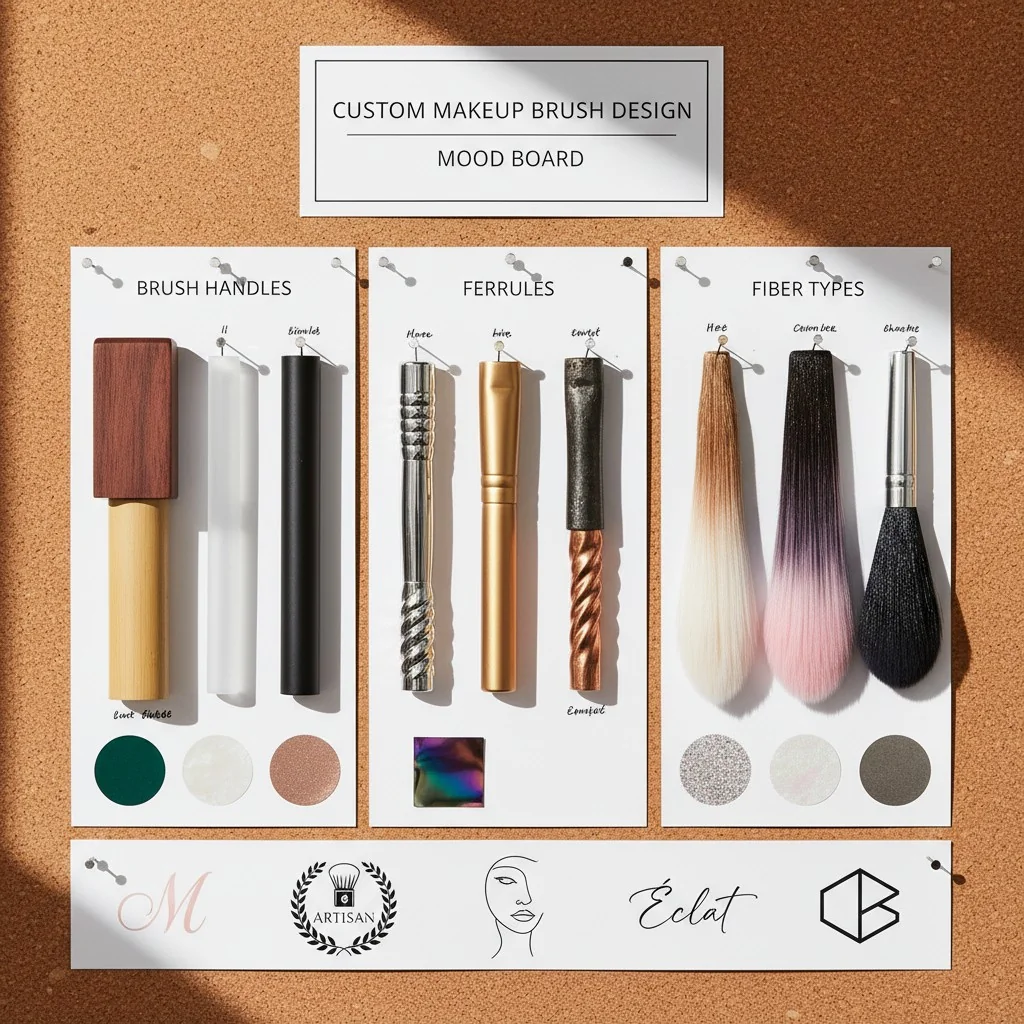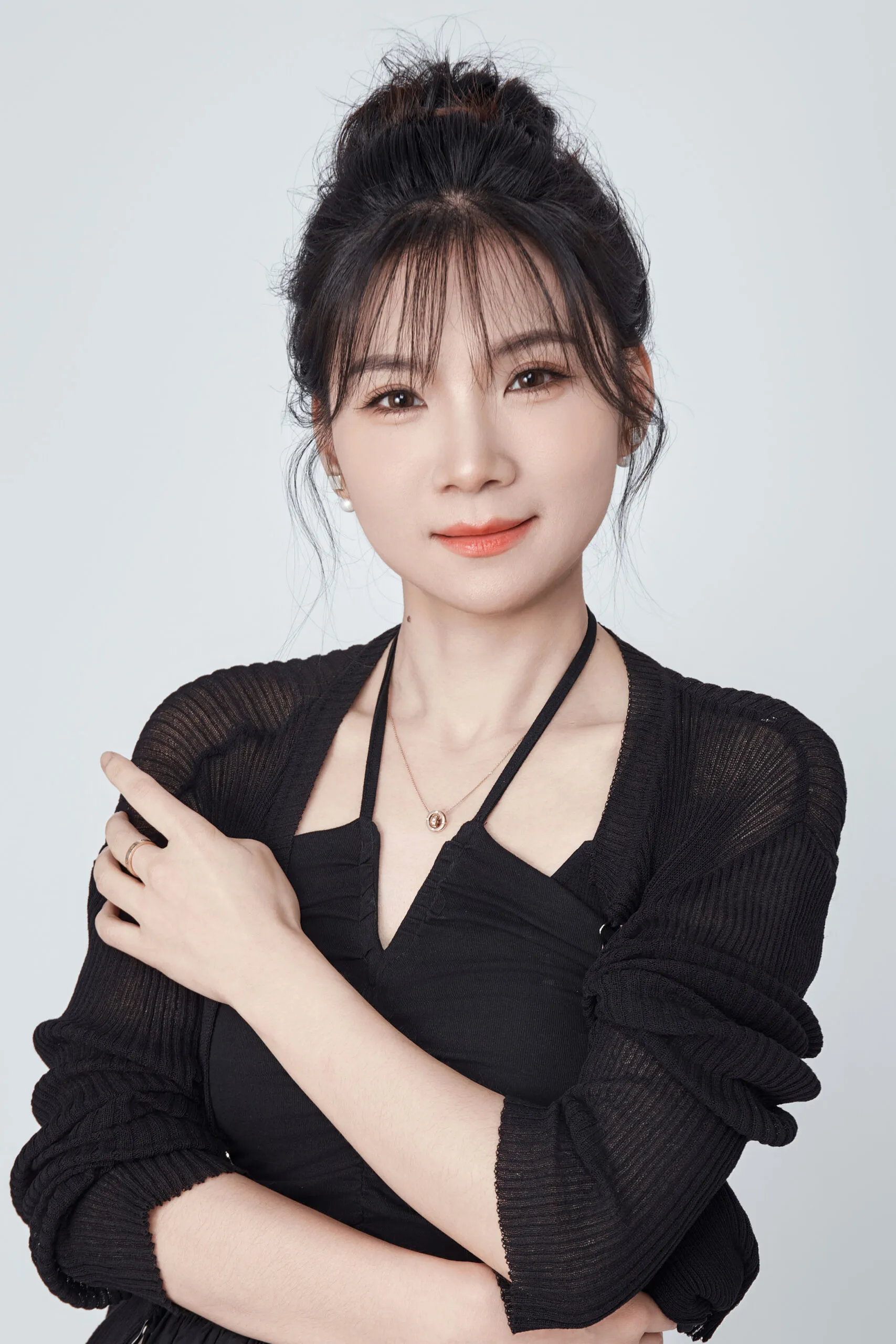Want to launch vegan brushes but fear they won’t perform? Misleading claims can hurt your brand. I’ll show you how to create high-quality, certified vegan brushes with confidence.
Vegan makeup brushes1 use non-animal fibers (e.g., PBT/Taklon, PET) and are cruelty-free when no animal testing occurs. Choose finely tapered PBT for powders, denser synthetics for creams, and verify claims with certifications (PETA/Leaping Bunny) and supplier compliance documents like REACH declarations.
I’ve seen so many brand founders like you struggle with this. They get lost in technical jargon and empty promises from suppliers. The good news is, it doesn’t have to be complicated. When I started my journey on the factory floor, I learned that quality comes from clarity and proof. Let’s break down exactly what these labels mean and what proof you need to ask for, so you can build your brush line without the guesswork.
All synthetic brushes are automatically vegan.False
A brush can use synthetic fibers but still use animal-derived glue in the ferrule, making it not truly vegan. You must verify all components.
The global vegan cosmetics market is projected to reach USD 9.87 billion by 2030.True
According to market analysis, the CAGR is 14.36%, driven by strong consumer demand for ethical and sustainable products, especially in Europe and Asia-Pacific.
Vegan vs. Cruelty-Free vs. Ethical: What Do These Labels Really Mean for Your Brushes?
Confused by all the different "ethical" labels for brushes? Using the wrong one can mislead customers. Let’s define vegan, Cruelty-free2, and ethical so you can build brand trust.
Vegan means no animal parts (hair, glue). Cruelty-free means no animal testing. Ethical is broader, including sustainability (FSC wood, recycled aluminum) and fair labor. Each requires separate proof.
When you’re building a brand, trust is everything. Your customers look at the claims on your packaging and expect them to be true. Getting these definitions right is the first step to building that trust. I remember a client who thought ‘cruelty-free’ automatically meant ‘vegan’. We had to explain that the brush glue could contain animal products. It’s a small detail, but it makes a huge difference for brand integrity and for your vegan customers. Let’s look at each term.
What Makes a Brush Vegan?
A truly vegan brush contains zero animal-derived components. This goes beyond just the bristles.
- Fibers: Must be synthetic (like PBT, PET, Nylon) or plant-based. No animal hair.
- Adhesive: The glue used to secure the bristles inside the ferrule must be free of animal-derived ingredients like casein.
- Handle/Coatings: Any paints or finishes on the handle must also be confirmed as vegan.
What Makes a Brush Cruelty-Free?
This claim is all about the testing process. A cruelty-free product means that neither the final product nor any of its individual ingredients were tested on animals. To prove this, you need to partner with a manufacturer who can provide declarations for the entire supply chain. Certifications from organizations like PETA or Leaping Bunny are the gold standard here.
What Does "Ethical" Add?
"Ethical" is a broader term that covers the entire impact of your product. It includes vegan and cruelty-free practices, but also adds:
- Sustainability: Using materials like FSC-certified wood for handles, recycled aluminum for ferrules, and post-consumer recycled (PCR) fibers.
- Fair Labor: Ensuring the factory that makes your brushes provides safe working conditions and fair wages.
A 'cruelty-free' logo means the brush contains no animal hair.False
Cruelty-free only refers to the absence of animal testing. The brush could still use natural (animal) hair that was sourced without testing the final product.
PETA offers separate certifications for 'cruelty-free' and 'vegan' because they are distinct claims.True
This distinction is critical. A product can be cruelty-free (not tested on animals) but not vegan (contains animal-derived ingredients), and vice-versa.
Synthetic Fiber Science: PBT, MCF, and Recycled rPBT—Which Fits Your Formula?
Do you worry synthetic brushes won’t perform like natural hair? The wrong fiber leads to bad reviews. Let’s break down the options to match the perfect fiber to your formula.
For powders, choose finely tapered PBT/Taklon3 or premium MCF for a soft feel and great pickup. For creams and liquids, denser PET or nylon offers more structure. Recycled rPBT can match virgin fiber performance.
The biggest fear I hear from brand founders is that synthetic brushes will feel "plasticky" or won’t pick up powder correctly. This was true of older synthetics, but modern fiber engineering has changed the game. It’s not just about the polymer choice; it’s about how the fiber is shaped. I always tell my clients to focus on the fiber diameter (e.g., 0.05-0.07mm for softness) and the tapering. That’s the secret to a soft, luxurious feel that can outperform natural hair.
Fiber Performance by Formula
| Fiber Type | Best For | Key Spec to Request |
|---|---|---|
| PBT/Taklon | Powders, All-Purpose | Fine Taper, Mixed Diameters (0.05-0.07mm) |
| MCF | Premium Powders | Engineered Cuticle-like Texture |
| PET/Nylon | Creams, Liquids | Denser Pack, Slightly Stiffer Filament |
| rPBT/rPET | All-Purpose (Eco-Focus) | PCR Certificate, Batch Consistency Samples |
The Workhorse: PBT/Taklon
Polybutylene terephthalate (PBT), often called Taklon, is the industry standard for high-quality vegan brushes. When the fibers are finely tapered and mixed in diameter, they create a soft, fluffy brush head that excels at picking up and blending powders. It’s also durable and easy to clean.
The Premium Choice: MCF
Micro Crystal Fiber (MCF) is an advanced polyester fiber engineered to mimic the textured cuticle of natural animal hair. This surface texture gives it superior powder pickup and a very smooth release. It comes at a higher cost but is perfect for a premium powder brush line.
The Sustainable Option: Recycled Fibers (rPBT/rPET)
For brands focused on sustainability, Recycled fibers4 are a fantastic choice. Made from post-consumer recycled plastics, high-quality rPBT can match the performance of virgin PBT. The key is to work with a supplier who can provide a PCR certificate and guarantee consistency in softness and color across batches.
All PBT/Taklon fibers are the same quality.False
Performance depends heavily on engineering. A brush with straight-cut, uniform PBT fibers will feel scratchy and perform poorly compared to one with finely tapered, mixed-diameter fibers.
Engineered synthetic fibers can mimic the cuticle structure of natural hair for superior powder pickup.True
Fibers like MCF are specifically designed with a textured surface to grab and hold powder particles, a feature previously unique to animal hair.
Proof, Not Promises: What Compliance and Lab Tests Should Your OEM Brief Require?
Your supplier makes big claims, but can they prove them? Empty promises can lead to retailer rejection. I’ll give you a checklist of the exact documents you need to demand.
For every brush, request a bill of materials. For claims, demand proof: PETA/Leaping Bunny certificates for cruelty-free/vegan, ISO 22196 lab reports for antimicrobial, and REACH/Prop 65 declarations for chemical safety.
A client of mine almost got blocked from a major EU retailer because their previous supplier’s "REACH compliant" claim was just a verbal promise. We had to scramble to get the actual declarations from the raw material providers. Now, I tell everyone: get it in writing before you place the order. Building a compliance folder for each product isn’t just paperwork; it’s your brand’s insurance policy. It protects you, your retailers, and your customers.
Your Compliance Document Pack
| Claim | Required Document | What It Proves |
|---|---|---|
| Vegan | Supplier Declaration / Vegan Society Cert. | No animal-derived materials (hair, glue, etc.) |
| Cruelty-Free | PETA / Leaping Bunny Certificate | No animal testing on ingredients or final product |
| Antimicrobial | ISO 22196 Lab Report | Statistically significant reduction in bacteria |
| EU/CA Safe | REACH / Prop 65 Declarations | Materials are free of specific restricted chemicals |
Substantiating Safety & Performance Claims
If you want to sell in Europe or California, you must prove your products are safe. Request declarations of compliance for REACH (EU) and Prop 65 (California) for all components—fibers, coatings, paints, and glues. If you want to claim your brushes are "antimicrobial," this isn’t a property of the fiber itself. It’s an additive. You must require a third-party lab report, like an ISO 22196 test, showing it actually works.
Building Your Compliance Folder
For every single brush SKU, you should have a dedicated folder. This folder should contain the Bill of Materials (BOM), all supplier declarations, third-party certifications, and lab test reports. When a retailer or customer asks for proof, you’ll have it ready. This level of organization shows you are a serious, professional brand.
A brush described as 'antimicrobial' is made from a special germ-killing fiber.False
The antimicrobial property comes from a chemical additive or coating applied to the fiber. This requires its own safety (REACH/Prop 65) and efficacy (ISO 22196) testing.
Retailers in the EU and California often require REACH and Prop 65 compliance declarations before listing a product.True
This is a non-negotiable entry requirement for many major markets and retailers, making it a critical part of your sourcing process.
Customization Playbook: How Do You Build a Fully Vegan, Brand-Ready Brush Set?
Have a great idea for a brush set but struggle to explain it to factories? Vague briefs lead to bad samples and delays. Here’s a checklist to spec your perfect vegan brush.
Specify every detail: vegan fibers (e.g., tapered PBT), recycled aluminum ferrules, and FSC-certified wood handles. Finalize colors, finishes, and logo application. Always approve a pre-production sample before mass production.
This is the fun part! Bringing your brand’s unique vision to life. At Brushino, we live by the detailed specification sheet. It acts as our contract with you and the blueprint for our production team. It ensures the brush in your hand is the exact brush you dreamed of, down to the last millimeter. Don’t be afraid to be specific. A good manufacturing partner will appreciate the clarity.
Step 1: The Brush Head (Hair)
This is all about performance and feel.
- Fiber: Choose your vegan fiber (PBT, rPBT, MCF).
- Shape & Cut: Define the brush shape (e.g., round, flat, angled, tapered).
- Dimensions: Specify the bristle length, width, and overall density.
Step 2: The Ferrule & Handle
This is where your brand’s aesthetic shines.
- Ferrule: Choose the material (recycled aluminum is a great ethical choice) and finish (e.g., anodized matte black, polished rose gold).
- Handle: Select the material (FSC-certified wood, bamboo, recycled plastic), shape, length, and weight.
- Finish: Decide on the handle color and finish (e.g., matte, gloss, soft-touch).
Step 3: The Finishing Touches (Packaging & Logos)
This is how you complete the customer experience.
- Logo: Specify the logo application method (e.g., silk-screen printing, laser engraving), color, and placement on the handle.
- Packaging: Design your retail box or pouch. Use recycled paper and minimal plastic to align with an ethical message. Include clear vegan/cruelty-free logos and care instructions.
Finally, always, always request a final pre-production sample (PPS). This is your "golden sample" that represents exactly what will be mass-produced. Sign off on it only when you are 100% happy.
Low MOQ means you can't customize your brushes.False
Modern OEM/ODM partners like Brushino are built to offer full customization (hair, handle, ferrule, packaging) for smaller, independent brands, even with low minimum order quantities.
Using FSC-certified wood for handles and recycled aluminum for ferrules enhances a brand's ethical positioning.True
These material choices provide tangible proof of a brand's commitment to sustainability, which strongly resonates with today's conscious consumers.
FAQs: Fast Answers to Your Top Questions
Are vegan makeup brushes better than animal hair?
For powders, finely tapered PBT/Taklon or MCF can match or surpass animal hair in softness and pickup when engineered well. They’re also more hygienic, easier to clean, and offer consistent quality.
What materials make a makeup brush “vegan”?
A brush is vegan when it contains no animal-derived hair or components. The fibers must be synthetic (PBT/Taklon, PET, nylon) or plant-based, and the glues, handles, and coatings must also be free of animal ingredients.
Do vegan brushes work with cream and liquid formulas?
Yes, they are excellent for creams and liquids. Specify slightly stiffer synthetics (like certain PET or a denser PBT pack) for smooth, streak-free application and better control.
How can brands prove cruelty-free claims?
The best way is through official certifications from organizations like PETA or Leaping Bunny. You should also collect supplier declarations that confirm no animal testing has occurred on any raw materials or the finished product.
Are recycled fibers as good as virgin fibers?
Yes, high-quality recycled fibers (rPBT/rPET) can match the performance of virgin fibers. The key is to work with a reputable supplier, verify the percentage of post-consumer recycled content, and test samples for softness and consistency.
Conclusion
Building a custom, certified vegan brush line is completely achievable. Use this guide to specify your needs, verify all claims, and find a manufacturing partner who understands your brand’s vision.
References
-
Explore the advantages of vegan makeup brushes, including performance, hygiene, and ethical considerations. ↩
-
Understand the significance of cruelty-free labeling and its impact on consumer trust and brand integrity. ↩
-
Discover why PBT/Taklon is the industry standard for vegan brushes and its benefits. ↩
-
Find out how recycled fibers can match the performance of virgin materials while being eco-friendly. ↩
